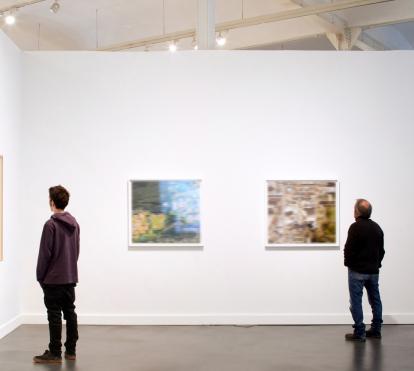
"I've selected the shots that stimulate, please or move me. Photographers with a commitment, poets, geometricians or simply talented observers. The list is long, and it would take several exhibitions to show them all," Henri Cartier-Bresson thus sums up the content of this showing, which features 93 images he has selected by the photographers who have most moved him. They are on display as part of the ample retrospective exhibition that CaixaForum has devoted to his work. Among the works are Black boys on the shore of Lake Tanganika (1931) by Martin Munkacsi. "This was the first photograph to really move me," states Cartier-Bresson. With Munkacsi are other classics such as Alfred Stieglitz, Robert Doisneau, André Kertész, Man Ray, Aleksandr Rodchenko, Lewis Hine, and major names of contemporary documentary makers like Walker Evans, Robert Capa, Abbas, Gilles Peress and Sebastião Salgado, and others. Organised by ”la Caixa” Foundation and produced by this entity in conjunction with the Henri Cartier-Bresson Foundation (Paris), the Cartier-Bresson's choice exhibition highlights, "the joy of watching, sensibility, sensuality, imagination, everything that is forged through a camera's viewfinder and reaches the heart".Cartier-Bresson's choice can be visited at CaixaForum (Av. del Marquès de Comillas, 6-8), from 19 September, 2003 to 4 January, 2004.Henri Cartier-Bresson began his painting and drawing career in the 1920's at painter André Lhote's studio. But he soon left brushes and pencils for a Leica camera. His early training has led to his frequent questioning of the essence of photography. Though the act of observation forms a common starting point, draftsmen construct reality in accordance with the norms of their art, whereas photographers are limited to intuitively capturing what they see. For Cartier-Bresson, photography recreates a supreme instant captured in a single shot. It's what he calls the "decisive instant", that requires "concentration, mental discipline, sensibility and a sense of geometry," Cartier-Bresson has projected this personal view of photography beyond his personal work, into not only that of his predecessors, but also his contemporary peers. Great photographers get "singular photographs that can be viewed for more than just a few seconds". In other words, exceptional photographs that follow a strict economy of resources, and demanding organisation of shapes. The 93 photographs spanning the genre's entire history which Cartier-Bresson has chosen for this exhibition exemplify this spirit. All of the pictures help viewers to better understand the world around them. Among the photographers whose work is on exhibit are such noteworthies as Alfred Stieglitz (1864-1946), Lewis Hine (1874-1940), August Sander (1876-1964), Man Ray (1890-1976), Aleksandr Rodchenko (1891-1956), André Kertész (1894-1985), Brassaï (1899-1984), Manuel Álvarez Bravo (1902-2002), Walker Evans (1903-1975), Robert Doisneau (1912-1994), Robert Capa (1913-1954), Helen Levitt (1913), Inge Morath (1923-2002), Ricard Terré (1928), Rene Burri (1933), Fernando Scianna (1943), Abbas (1944), Sebastião Salgado (1944) and Cristina García Rodero (1949).More information: Henri Cartier-Bresson: RetrospectiveCartier-Bresson's choiceFrom 19 September, 2003 to 4 January, 2004CaixaForumAv. Marquès de Comillas, 6-808038 BarcelonaTel.: 902 22 30 40Hours:Tuesday to Sunday, holidays, 10 am to 8 pmMondays closed, except holidaysFree admissionwww.fundacio.lacaixa.es